Penwith isn’t an island, but it feels like one. The heathland above the cliffs is filled with mine workings and Iron and Bronze Age relics: menhirs, fogous and quoits. To most visitors Cornwall is as simple as the GWR posters: gaudy pastels, happy children, ice cream. This Cornwall exists for six weeks in the summer holidays, the setting for a visitor’s bourgeois childhood – Enid Blyton’s Cornwall, principally – but it’s not the essential one. There are multiple real Cornwalls, and they have nothing to do with the tourist aesthetic, which the visitors bring with them. In this spirit, Cornwall’s famous writers are usually from outside: Virginia Woolf (Kensington); Daphne du Maurier (Hampstead); John le Carré (Dorset). Its cinema and television, meanwhile, have tended to the ludicrous (Wycliffe), twee (Doc Martin, Archipelago) or offensive (Straw Dogs, a Cornish Deliverance set in St Buryan with Dustin Hoffman as a naïf tortured by murderous local roofers). I can’t bear to describe the terrible travelogues. Cornwall is a repository for other people’s imaginings and on the Isles of Scilly day-trippers walk on ancient graves.
The Newlyn-based film-maker Mark Jenkin offers another interpretation of Cornwall. Newlyn is no ordinary fishing village: unlike neighbouring Mousehole, it has not succumbed to gentrification. You can still get beaten up here, and gift shops survive a season before closing; there’s no market for them. The shadows round the Star Inn, a bewitching pub opposite the fish market, are deep.
Jenkin is part of a growing Cornish film industry centred on Falmouth University’s School of Film and Television and the producer Denzil Monk. His debut was Bait (2019), a story about the tensions between incomers and locals in an unnamed fishing village we can only presume is Mousehole. It begins with a minor parking infraction and swells from there. It is shot in black and white and the sound effects suggest we’re underwater. It also has an amazing performance from Ed Rowe – also Cornwall’s most famous comic, Kernow King – as a singular tragic hero: a fisherman without a boat. Jenkin has assembled a company around him dedicated to the investigation of Cornish identity. Rowe’s short film Mab Hudel (Magical Son), the riveting story of a gay rugby-playing dairy farmer, was the first Cornish-language film to play at the London Film Festival. Callum Mitchell, assistant director of Bait, released the radio play Solomon Browne about the Penlee Lifeboat disaster of 1981 last year. Bait won a Bafta for outstanding British debut. He had fretted it was parochial, and wondered: ‘Will anyone who isn’t in Cornwall – even in Newlyn – care?’
Jenkin’s new film is Enys Men: it is Cornish for ‘stone island’. Its star is the Penwith landscape and the ghosts of those who have lived here. (Unlike Bait, it has no visitors. Jenkin has doubled down on Cornish identity, and it was filmed during the second lockdown when there were no visitors.) It is brightly coloured, grainy like a recently unearthed object, has multiple possible narratives and almost no dialogue beyond a wireless. In its relative silence, all the true Cornwalls collide.
The film tells the story of The Volunteer, a woman in her late forties, played by Mary Woodvine, who is Jenkin’s partner and a member of his stock company. (She was the second homeowner in Bait, combining decency, frustration, and guilt in the face of the minor parking infraction.) She is calm and forthright, a functioning woman staying on the island alone in 1973 – at least we initially think she is alone – to monitor the condition and temperature of a gaudy spray of flowers on an outcrop above the sea. (The ecologically aware will note the rise in temperature over the course of a week – 0.2 degrees.) She performs repetitive tasks of survival and observance. She brews tea in her cottage, drops a stone down a mine, fights with the generator, and reads Teddy Goldsmith’s ecological polemic A Blueprint for Survival. Mary Woodvine calls her ‘me in another life. Content but melancholy. An introvert.’ She manifests what the Cornish call ‘hireth’ – an inconsolable longing for a homeland. She lives by sunlight and candlelight, and she deals in the liquors of Cornwall: petrol, seawater, blood.
As May Day approaches, she is assailed by visions of mineworkers, fisherman and a mysterious young woman whose abdominal wound matches her own. Lichen – an indicator of purity – grows on the flowers and from her wound. A menhir on the hill above the cottage fascinates her. She seems to veer in and out of the stone, as if she is a Merry Maiden of the stone circle at Boleigh, who, it is fantasised, was turned to stone for dancing. If she is haunted, she is strangely unperturbed by it, because there is an acceptance here, both ominous and soothing, and this yielding to dominion by landscape is very Cornish. Her only question is: who is there?
Landscape has agency in Enys Men. I walk to Boswens Menhir after watching it: it’s the stone in Enys Men, though they made a replica, which I found in the rafters at the reclamation yard Shiver Me Timbers a few days later because the owner is also the prop master. It’s middle Bronze Age, about 4,000 years old, a haunted object. (The grass does not grow around it as it should: it is fairie grass. The dog will not approach it.) This, too, is how Jenkin sees film. Bait, he tells me, ‘felt like an object dredged up from the sea’, and it looks like one. Enys Men is likewise ‘an object. It is not an abstract series of ones and zeros on a hard drive on a server somewhere. There is a 35mm film print of it. I now feel that that is what the film is like: a haunted object, an untrustworthy film.’ He won’t offer a logical conclusion because he believes it thwarts its purpose to be solved. Mary Woodvine tells me: ‘Generally, [Jenkin] didn’t tell me what was happening in [The Volunteer’s] mind all of the time. That was a question I had to answer for myself.’ The viewer must answer too: they must project their subjective interpretation. For myself, I am not sure that she exists.
Enys Men is Jenkin’s subconscious response to Penwith, based on his dreams and the 1970s public information films ‘designed to stop children going outside’. (Filming Bait, he had a dream that a crew member should be a laughing circus ringmaster, and there is a version of that scene in Enys Men.) ‘I wanted to put normal people on the screen,’ he says, and offer ‘a picture of working-class Cornish life away from the romanticised idyll that a lot of screen representations are: showing the bal maidens stamping out the beat which is the rhythm of the island’.
He wanted to put Cornwall’s industrial heritage on screen because it ‘was the heart of the industrial revolution but we are thought of as a backwater full of ice-cream sellers. I wanted to put that on screen – and how quickly it all falls apart.’ He wanted to do it subjectively because, for him, that is what film-makers should do. He marvels at the Bafta-winning documentarian Chris Morris’s film about a menhir, A Year in a Field, because ‘there is no objectivity in it. This is what all filmmaking should be like: an undisguised personal voice. No balance. The balance comes from the multitudes who could make that kind of work.’
He returns to the idea of film as haunted object: his 35mm print. ‘Most people won’t see that version of the film,’ he says, ‘but just to know that the object is now passing through projection booths and will ultimately be in a huge cold storage unit at the BFI archive up at Berkhamsted on the shelf as an untouchable, solid, real, tangible thing that in 100 or 200 years’ time – if we are still here – somebody might take down off the shelf and go, “What is this?” That gives me a lot of pleasure.’ I have lived here long enough to know how Cornish this is: whatever transpires, the stone endures. Jenkin has placed his Cornwall here, with precision and love and a terrible longing. I can only think of Gustave Flaubert’s despairing explanation of Madame Bovary: the menhir, c’est moi.
Got something to add? Join the discussion and comment below.
Get 10 issues for just $10
Subscribe to The Spectator Australia today for the next 10 magazine issues, plus full online access, for just $10.
You might disagree with half of it, but you’ll enjoy reading all of it. Try your first month for free, then just $2 a week for the remainder of your first year.


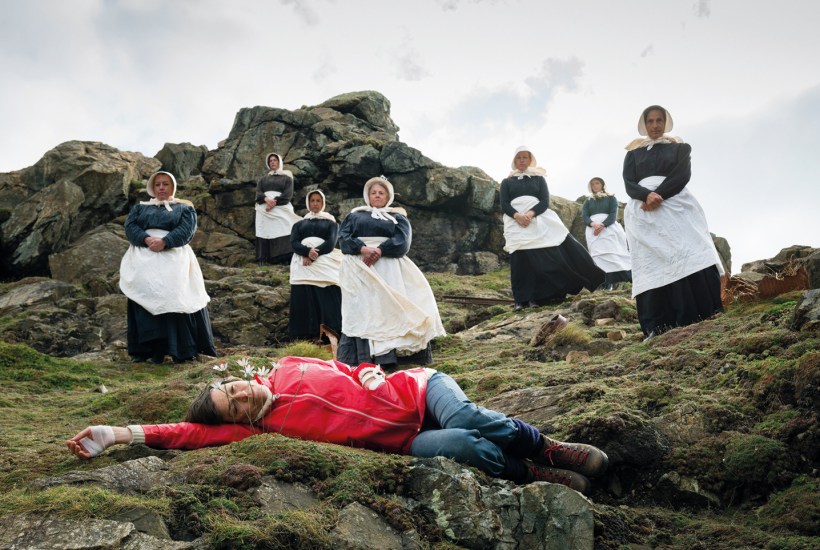


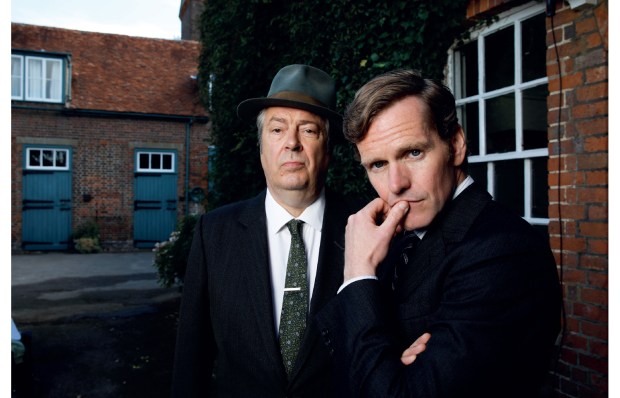
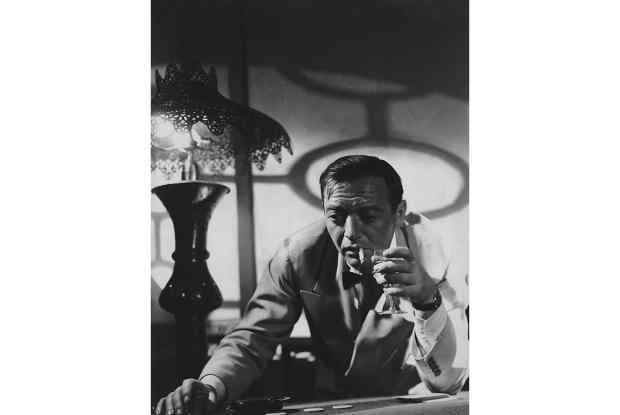
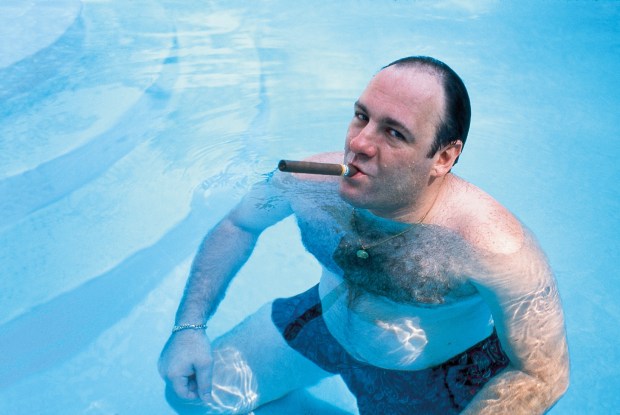
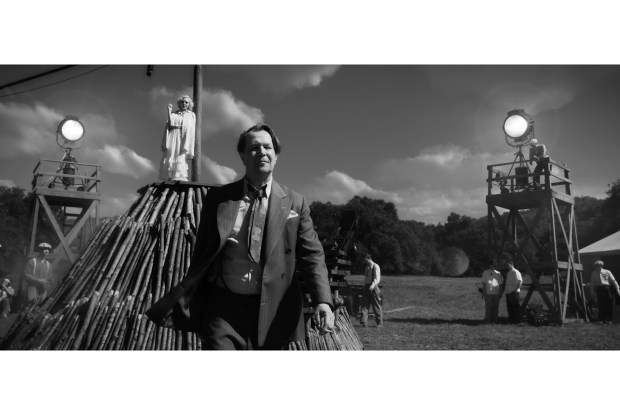






Comments
Don't miss out
Join the conversation with other Spectator Australia readers. Subscribe to leave a comment.
SUBSCRIBEAlready a subscriber? Log in